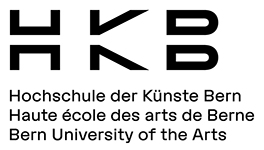The aqueous environment and solvents for treatments on works of art on paper
13 - 16 February 2024
Instructors:
Paolo CREMONESI, Conservation Scientist
Letizia SATTO, Conservator
Program
First Day
9:00 – 13:00 and 14:00-18:00, Lecture, Cremonesi
Properties and mode of action of water. The aqueous environment: pH, acids and bases, buffers. Ionization, dissociation and hydrolysis. Salts and solubility. Ion concentration, conductivity and related processes: ion diffusion and osmosis. The tonicity of aqueous solutions. Auxiliary ‘active principles’: surfactants and chelators, classification and mode of action. Gelling materials: polysaccharide-based, polyacrylic acid derivatives and inorganic materials. Thermo-reversible gelling materials. Classification, properties and mode of action of hydrolytic enzymes.
Classification and properties of organic solvents. Volatility, diffusion and solving power. The issue of toxicity. The Solubility Parameters model. A gradual approach to solubility of film-formers: the solubility test. Siloxanes in free and gelled form. Siloxanes in free-and gelled-form and their use in temporary hydrophobization procedures for water-sensitive surfaces. Oil-in-water macroemulsions in gelled form.
Second Day
9:00 – 13:00 and 14:00 - 18:00. Practical Session, Cremonesi. Demonstration under a video camera connected to the video-projector.
Preparation of aqueous solution and solvent mixtures in free and gelled form. Measuring surface parameters (pH and conductivity). Simple spot test for identification of starch and proteins.
Third Day
9:00 – 13:00 and 14:00 - 18:00. Practical Session, Satto
Washing treatments with aqueous solutions of different tonicity. Washing by capillarity treatments with non-woven materials. Rinsing with volatile-solute. Aqueous solutions in gelled form with polysaccharides, polyacrylates and Laponite, and as thermos-reversible rigid gels. Cleaning in combination with temporary hydrophobization through Siloxanes. Oil-in-water polymer macroemulsions, with and without temporary hydrophobization, for localized treatments of adhesive removal.
Fourth Day
9:00 – 13:00 and 14:00 - 18:00. Practical Session, Satto
Preparation and application of hydrolytic enzyme solutions, in free- and gelled-form and as rigid gels: proteolytic and amylolytic enzymes. Deacidification treatments with Bicarbonates solutions as rigid gels. Localized chemical reduction/chelation treatments for rust spots, similar treatments for foxing.
In the practical Session, the course participants can practise on their own sample papers: various works of art on paper, traditional and modern, for treatments of 'cleaning', removal of adhesives, tapes, rust spots. Water sensitive surfaces, fugitive inks, water-based paint media. Foxing.
Place
Berner Fachhochschule / Hochschule der Künste Bern
Fellerstrasse 11
3027 Bern
Number of participants
Practical session: limited to 13 participants
Lecture: limited to 26 participants
Participation fees
Practical and Lecture Part
CHF 675.-- non SKR members
CHF 450.-- SKR members
Lecture part only
CHF 300.-- non SKR members
CHF 200.-- SKR members
Registration
until 18.12.2023 at: www.skr.ch
Eine Kooperation des SKR/SCR und der

